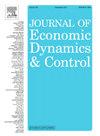熊彼特增长理论中的专利政策、发明与创新
IF 2.3
3区 经济学
Q2 ECONOMICS
引用次数: 0
摘要
我开发了一个内生增长模型,该模型将企业发明、专利和商业化创新的决策分离开来。我使用该模型来检验专利政策的多个维度如何通过塑造这些相对激励来影响经济增长。我特别关注专利要求的作用,它规定了发明人在开发过程中必须取得多远的进展才能获得专利。该模型正式化了加强这些要求如何对经济增长产生竞争效应;更强的要求通过增加专利的预期成本降低了事前的研究激励,但通过减少与商业化相关的额外成本,增加了将专利发明充分开发为商业创新的事后激励。总的来说,我的分析支持使用更严格的专利要求作为一种有效的政策工具,通过将激励从追求专利的发明转向商业创新的发展来改善经济成果。本文章由计算机程序翻译,如有差异,请以英文原文为准。
Patent policy, invention and innovation in the theory of Schumpeterian growth
I develop an endogenous growth model that separates firm decisions to invent, patent, and commercialize new innovations. I use the model to examine how multiple dimensions of patent policy impact economic growth by shaping these relative incentives. I pay particular attention to the role of patenting requirements that dictate how far along the development process an inventor must progress to obtain a patent. The model formalizes how strengthening such requirements generates competing effects on economic growth; stronger requirements reduce ex ante research incentives by increasing the expected cost of patenting, but increase ex post incentives to fully develop patented inventions into commercial innovations by decreasing the additional cost associated with commercialization. Overall, my analysis supports the use of stronger patenting requirements as an effective policy tool to improve economic outcomes by shifting incentives away from invention in the pursuit of patents and towards the development of commercial innovations.
求助全文
通过发布文献求助,成功后即可免费获取论文全文。
去求助
来源期刊

Journal of Economic Dynamics & Control
ECONOMICS-
CiteScore
3.10
自引率
10.50%
发文量
199
期刊介绍:
The journal provides an outlet for publication of research concerning all theoretical and empirical aspects of economic dynamics and control as well as the development and use of computational methods in economics and finance. Contributions regarding computational methods may include, but are not restricted to, artificial intelligence, databases, decision support systems, genetic algorithms, modelling languages, neural networks, numerical algorithms for optimization, control and equilibria, parallel computing and qualitative reasoning.
 求助内容:
求助内容: 应助结果提醒方式:
应助结果提醒方式:


